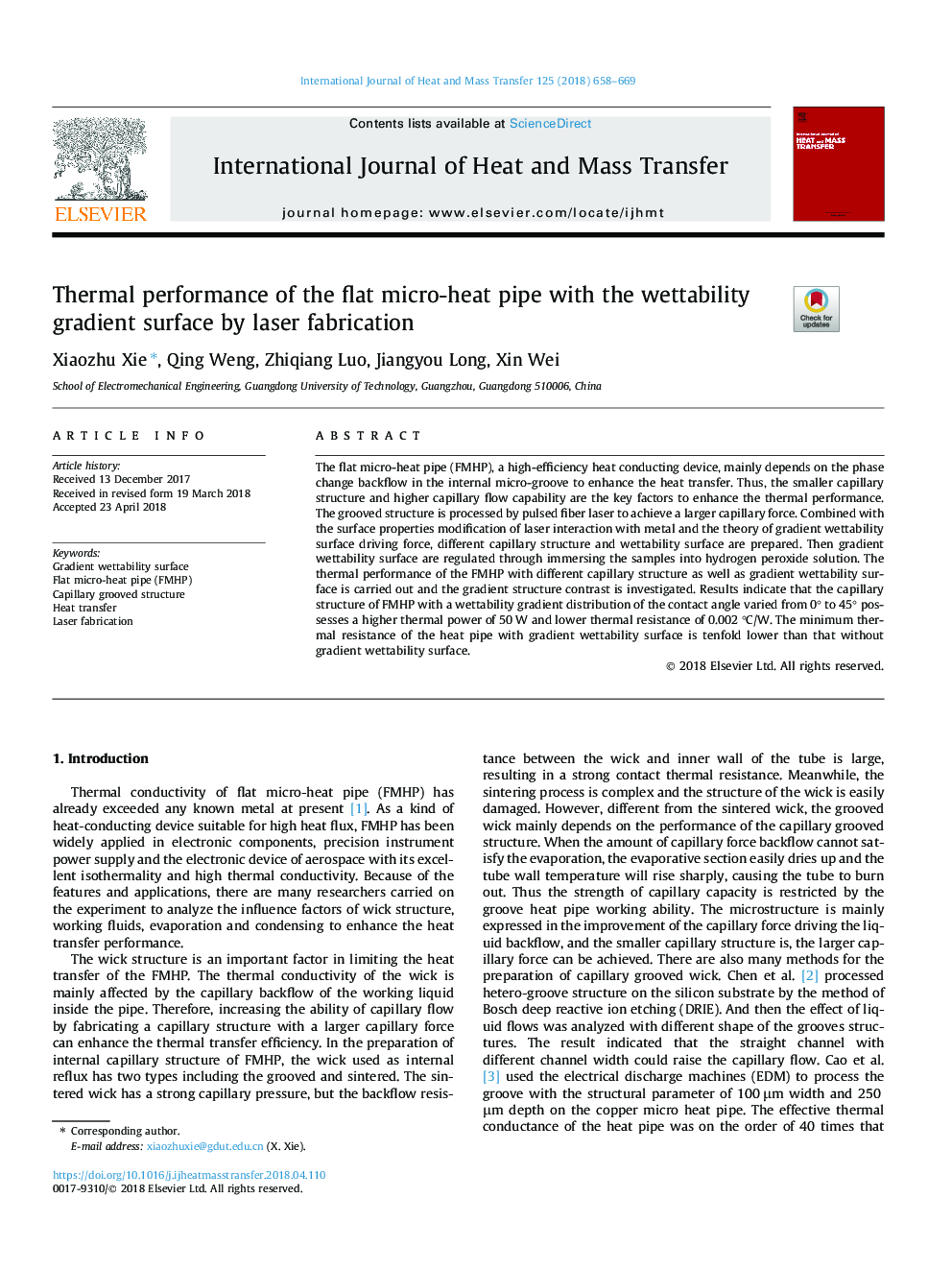| Article ID | Journal | Published Year | Pages | File Type |
|---|---|---|---|---|
| 7054094 | International Journal of Heat and Mass Transfer | 2018 | 12 Pages |
Abstract
The flat micro-heat pipe (FMHP), a high-efficiency heat conducting device, mainly depends on the phase change backflow in the internal micro-groove to enhance the heat transfer. Thus, the smaller capillary structure and higher capillary flow capability are the key factors to enhance the thermal performance. The grooved structure is processed by pulsed fiber laser to achieve a larger capillary force. Combined with the surface properties modification of laser interaction with metal and the theory of gradient wettability surface driving force, different capillary structure and wettability surface are prepared. Then gradient wettability surface are regulated through immersing the samples into hydrogen peroxide solution. The thermal performance of the FMHP with different capillary structure as well as gradient wettability surface is carried out and the gradient structure contrast is investigated. Results indicate that the capillary structure of FMHP with a wettability gradient distribution of the contact angle varied from 0° to 45° possesses a higher thermal power of 50â¯W and lower thermal resistance of 0.002â¯Â°C/W. The minimum thermal resistance of the heat pipe with gradient wettability surface is tenfold lower than that without gradient wettability surface.
Keywords
Related Topics
Physical Sciences and Engineering
Chemical Engineering
Fluid Flow and Transfer Processes
Authors
Xiaozhu Xie, Qing Weng, Zhiqiang Luo, Jiangyou Long, Xin Wei,
